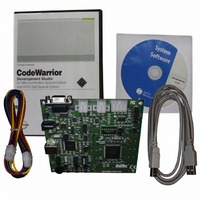DEMO9S12XEP100 Freescale Semiconductor, DEMO9S12XEP100 Datasheet - Page 300

DEMO9S12XEP100
Manufacturer Part Number
DEMO9S12XEP100
Description
BOARD DEMO FOR MC9S12XEP100
Manufacturer
Freescale Semiconductor
Type
MCUr
Datasheet
1.EVB9S12XEP100.pdf
(1328 pages)
Specifications of DEMO9S12XEP100
Contents
Board, Cables, CD
Processor To Be Evaluated
MC9S12XEP100
Data Bus Width
16 bit
Interface Type
RS-232
Silicon Manufacturer
Freescale
Core Architecture
S12
Core Sub-architecture
S12
Silicon Core Number
MC9S12
Silicon Family Name
S12XE
Rohs Compliant
Yes
For Use With/related Products
MC9S12XEP100
Lead Free Status / RoHS Status
Lead free / RoHS Compliant
Available stocks
Company
Part Number
Manufacturer
Quantity
Price
Company:
Part Number:
DEMO9S12XEP100
Manufacturer:
PANASONIC
Quantity:
46 000
Company:
Part Number:
DEMO9S12XEP100
Manufacturer:
Freescale Semiconductor
Quantity:
135
- Current page: 300 of 1328
- Download datasheet (9Mb)
Chapter 7 Background Debug Module (S12XBDMV2)
Differently from the normal bit transfer (where the host initiates the transmission), the serial interface ACK
handshake pulse is initiated by the target MCU by issuing a negative edge in the BKGD pin. The hardware
handshake protocol in
should follow this timing constraint in order to avoid the risk of an electrical conflict in the BKGD pin.
The ACK handshake protocol does not support nested ACK pulses. If a BDM command is not
acknowledge by an ACK pulse, the host needs to abort the pending command first in order to be able to
issue a new BDM command. When the CPU enters wait or stop while the host issues a hardware command
(e.g., WRITE_BYTE), the target discards the incoming command due to the wait or stop being detected.
Therefore, the command is not acknowledged by the target, which means that the ACK pulse will not be
issued in this case. After a certain time the host (not aware of stop or wait) should decide to abort any
possible pending ACK pulse in order to be sure a new command can be issued. Therefore, the protocol
provides a mechanism in which a command, and its corresponding ACK, can be aborted.
7.4.8
The abort procedure is based on the SYNC command. In order to abort a command, which had not issued
the corresponding ACK pulse, the host controller should generate a low pulse in the BKGD pin by driving
it low for at least 128 serial clock cycles and then driving it high for one serial clock cycle, providing a
speedup pulse. By detecting this long low pulse in the BKGD pin, the target executes the SYNC protocol,
see
and therefore the related ACK pulse, are being aborted. Therefore, after the SYNC protocol has been
completed the host is free to issue new BDM commands. For Firmware READ or WRITE commands it
can not be guaranteed that the pending command is aborted when issuing a SYNC before the
corresponding ACK pulse. There is a short latency time from the time the READ or WRITE access begins
until it is finished and the corresponding ACK pulse is issued. The latency time depends on the firmware
READ or WRITE command that is issued and if the serial interface is running on a different clock rate
than the bus. When the SYNC command starts during this latency time the READ or WRITE command
will not be aborted, but the corresponding ACK pulse will be aborted. A pending GO, TRACE1 or
300
Because of an order from the United States International Trade Commission, BGA-packaged product lines and partnumbers
indicated here currently are not available from Freescale for import or sale in the United States prior to September 2010
Section 7.4.9, “SYNC — Request Timed Reference
Hardware Handshake Abort Procedure
The only place the BKGD pin can have an electrical conflict is when one
side is driving low and the other side is issuing a speedup pulse (high). Other
“highs” are pulled rather than driven. However, at low rates the time of the
speedup pulse can become lengthy and so the potential conflict time
becomes longer as well.
The ACK pulse does not provide a time out. This means for the GO_UNTIL
command that it can not be distinguished if a stop or wait has been executed
(command discarded and ACK not issued) or if the “UNTIL” condition
(BDM active) is just not reached yet. Hence in any case where the ACK
pulse of a command is not issued the possible pending command should be
aborted before issuing a new command. See the handshake abort procedure
described in
Figure 7-11
Section 7.4.8, “Hardware Handshake Abort
MC9S12XE-Family Reference Manual , Rev. 1.23
specifies the timing when the BKGD pin is being driven, so the host
NOTE
NOTE
Pulse”, and assumes that the pending command
Procedure”.
Freescale Semiconductor
Related parts for DEMO9S12XEP100
Image
Part Number
Description
Manufacturer
Datasheet
Request
R
Part Number:
Description:
Manufacturer:
Freescale Semiconductor, Inc
Datasheet:
Part Number:
Description:
Manufacturer:
Freescale Semiconductor, Inc
Datasheet:
Part Number:
Description:
Manufacturer:
Freescale Semiconductor, Inc
Datasheet:
Part Number:
Description:
Manufacturer:
Freescale Semiconductor, Inc
Datasheet:
Part Number:
Description:
Manufacturer:
Freescale Semiconductor, Inc
Datasheet:
Part Number:
Description:
Manufacturer:
Freescale Semiconductor, Inc
Datasheet:
Part Number:
Description:
Manufacturer:
Freescale Semiconductor, Inc
Datasheet:
Part Number:
Description:
Manufacturer:
Freescale Semiconductor, Inc
Datasheet:
Part Number:
Description:
Manufacturer:
Freescale Semiconductor, Inc
Datasheet:
Part Number:
Description:
Manufacturer:
Freescale Semiconductor, Inc
Datasheet:
Part Number:
Description:
Manufacturer:
Freescale Semiconductor, Inc
Datasheet:
Part Number:
Description:
Manufacturer:
Freescale Semiconductor, Inc
Datasheet:
Part Number:
Description:
Manufacturer:
Freescale Semiconductor, Inc
Datasheet:
Part Number:
Description:
Manufacturer:
Freescale Semiconductor, Inc
Datasheet:
Part Number:
Description:
Manufacturer:
Freescale Semiconductor, Inc
Datasheet:











